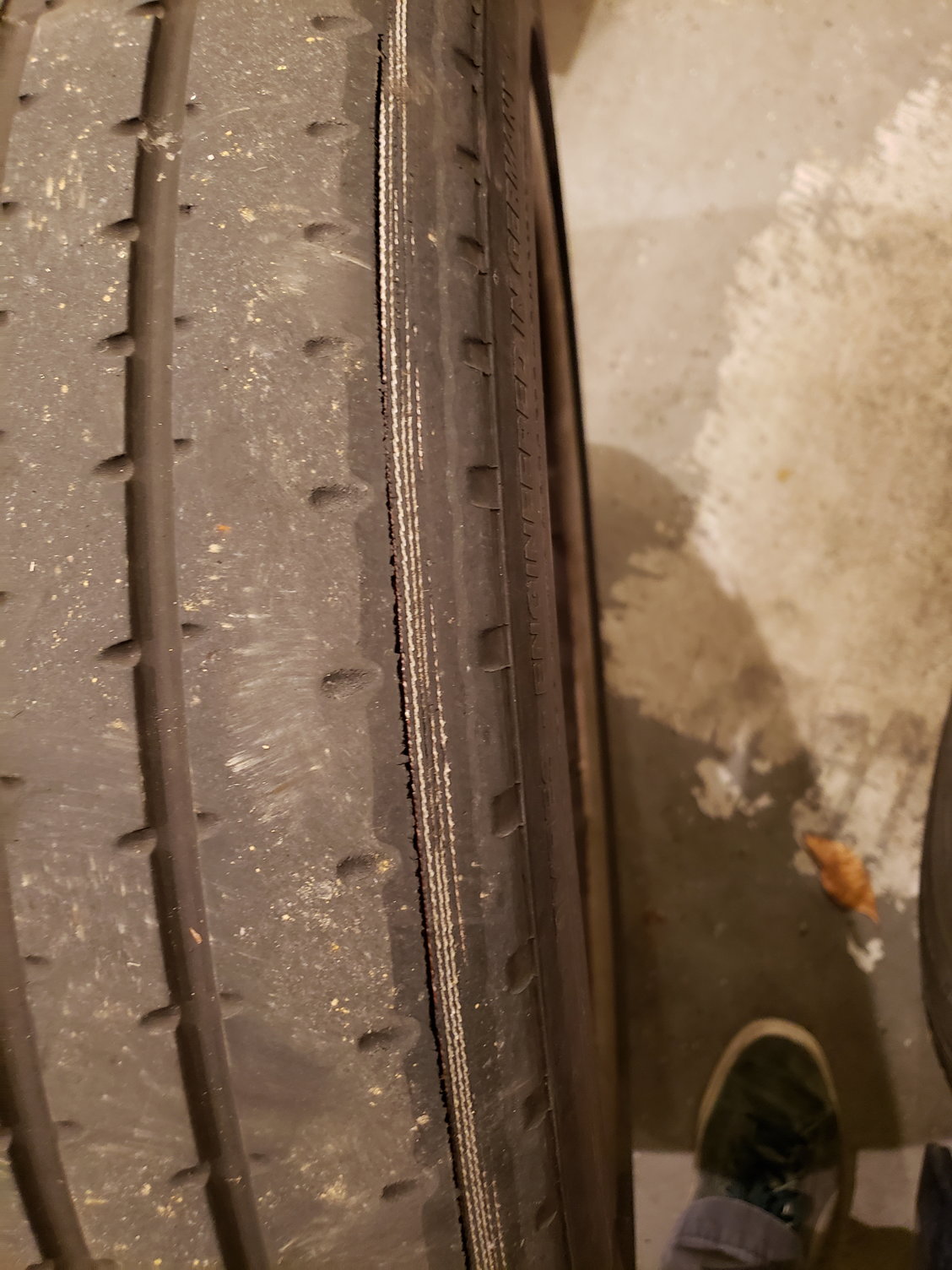Cupped tires refer to uneven wear pattern on the tire’s tread surface, causing the tread to appear cupped or scalloped. Cupping is often caused by issues such as improper suspension alignment, worn out shocks or struts, unbalanced tires, or suspension issues like worn out bushings or bearings.
Cupped tires can lead to a noisy and uncomfortable ride, poor traction, and decreased tire life. So, it’s essential to address the underlying issues and get the tires replaced to ensure safety and optimal performance while driving.

Credit: majorleaguefishing.com
The Basics Of Cupped Tires
When it comes to maintaining your vehicle’s tires, there are several issues that can arise, one of which is cupping. Cupping refers to the uneven wearing of the tire tread, resulting in a wave-like pattern. This can lead to a bumpy ride, excessive noise, and, ultimately, a decrease in tire performance. Understanding the basics of cupped tires is essential for proper tire maintenance and ensuring a smooth and safe driving experience.
Causes Of Cupping
Identifying the causes of cupping is crucial in preventing further damage to your tires. There are several factors that can contribute to the development of cupping:
- Poor Tire Rotation: When tires are not rotated regularly, the wear pattern becomes uneven, leading to cupping.
- Unbalanced Tires: Imbalanced tires can result in uneven pressure distribution, causing cupping.
- Worn Shock Absorbers: Faulty shock absorbers can lead to excessive bouncing and uneven tire wear.
- Misaligned Wheels: Misalignment can cause uneven tire wear, including cupping.
Identifying Cupping
Recognizing cupping on your tires is vital to address the issue promptly and prevent further damage. Here are some signs to help you identify cupping:
- Uneven Wear: Cupping typically creates a wavy pattern on the tire tread, which is different from regular wear.
- Noise: Cupping can cause increased road noise due to the inconsistent contact surface between the tire and the road.
- Shaking or Vibrations: If you experience vibrations or shaking while driving, it may indicate cupped tires.
Regular tire inspections can help identify cupping at an early stage, allowing you to address the issue before it worsens.

Credit: www.linkedin.com
Effects Of Cupped Tires
Cupped tires, also known as scalloped or feathered tires, occur when there is uneven wear across the tread surface. This condition leads to a number of negative effects, affecting both vehicle performance and safety. Understanding these effects is crucial to maintaining optimal tire condition and ensuring a smooth and safe ride.
On Vehicle Performance
Cupped tires can significantly impact vehicle performance in several ways:
- Inconsistent Handling: Cupping causes irregular tread pattern, leading to an uneven grip on the road. This inconsistency can result in poor handling and reduced maneuverability of the vehicle.
- Noise and Vibration: Cupped tires often generate more noise and vibration compared to properly balanced and aligned tires. This can create an uncomfortable and noisy ride, affecting the overall driving experience.
- Reduced Traction: As cupping wears down the tread unevenly, the overall contact patch with the road is decreased. This reduced contact area results in diminished traction, especially during wet or slippery conditions, increasing the risk of skidding or hydroplaning.
On Safety
The effects of cupped tires on safety cannot be underestimated. Here are some key considerations:
- Increased Stopping Distance: Cupped tires reduce the tire’s ability to grip the road effectively, thereby increasing the stopping distance. This compromised braking performance can be particularly hazardous in emergency situations.
- Poor Cornering Stability: The uneven tread wear caused by cupping can affect the tire’s ability to maintain adequate traction during cornering. This may lead to instability, reduced control, and an increased risk of accidents.
- Uneven Tire Wear: Cupping is not just a result of uneven tire wear; it can also accelerate the wear process. Cupped tires tend to wear out faster and unevenly, necessitating premature tire replacements and adding to the overall maintenance cost.
It is crucial to regularly inspect your tires for any signs of cupping and address the issue promptly. Proper tire maintenance, including rotation and balancing, can help prevent cupping and prolong the life of your tires, ensuring a safer and more enjoyable driving experience.
Prevention And Maintenance
When it comes to the prevention and maintenance of cupped tires, it’s important to understand the underlying causes of this common issue. By taking proactive measures, you can prevent cupping and ensure the longevity of your tires. Let’s delve into some key preventive steps and maintenance practices that can help you avoid cupped tires and maintain optimal tire performance.
Regular Tire Rotation
One of the most effective ways to prevent cupped tires is to ensure regular tire rotation. This involves periodically swapping the positions of your tires to promote even wear. By distributing the wear more evenly across all tires, you can reduce the risk of cupping and extend the lifespan of your tires.
Proper Wheel Alignment
Another crucial factor in preventing cupped tires is maintaining proper wheel alignment. When your wheels are misaligned, it can lead to uneven tire wear and ultimately contribute to cupping. By scheduling regular wheel alignment checks and adjustments, you can mitigate the risk of cupping and ensure that your tires wear uniformly.

Credit: rennlist.com
Addressing Cupped Tires
Replacing Worn Suspension Components
Worn suspension parts can lead to cupped tires.
- Check suspension components regularly for wear and tear.
- Replace any worn out shocks or struts promptly.
- Properly aligned suspension prevents cupping.
Choosing The Right Tires
Correct tire choice is essential to prevent cupping.
- Opt for tires with even tread wear patterns.
- Ensure correct tire pressure and alignment.
- Rotate tires regularly for even wear distribution.
Professional Help And Diy Solutions
When dealing with cupped tires, it is essential to address the issue promptly to ensure safety and optimal performance of your vehicle. Here are ways to seek professional help or tackle the problem yourself:
Consulting A Mechanic
If you notice cupping on your tires, schedule a detailed inspection with a qualified mechanic. By assessing the root cause of the cupping, mechanics can recommend appropriate solutions.
Diy Inspection And Maintenance Tips
- Regularly check tire pressure to ensure even wear and prevent cupping.
- Rotate your tires at recommended intervals to promote uniform tread wear.
- Inspect suspension components for wear or damage that may contribute to cupping.
- Ensure proper wheel alignment to prevent uneven tire wear patterns.
By following these DIY tips, you can minimize the risk of cupping tires and extend the lifespan of your tires.
Frequently Asked Questions On What Is Cupped Tires
Is It Ok To Drive On Cupped Tires?
Driving on cupped tires can lead to uneven wear, noisy and bumpy rides, reduced traction, and potential safety hazards. It’s crucial to address the cause of cupping and replace the tires if necessary to ensure safe and smooth driving experience.
Regular tire maintenance is essential to prevent cupping.
How Do You Tell If A Tire Is Cupped?
Cupped tires have uneven wear on the tread surface, causing a bumpy ride. You can easily spot cupping by running your hand across the tire tread. If you feel high and low spots, it’s likely that the tire is cupped.
Do Cupping Tires Need To Be Replaced?
Yes, cupping tires need to be replaced. Cupping occurs when uneven wear causes small, scalloped depressions on the tire surface. This can lead to a noisy, uncomfortable ride and poor traction. Replacing the tires is the best solution to ensure safety and optimal performance.
What Happens When Tires Start Cupping?
Cupping on tires causes uneven wear, leading to vibration and noise. It’s often caused by improper suspension, alignment, and tire rotation. Regular maintenance and inspection can help prevent cupping and ensure a smoother ride.
Conclusion
Understanding cupped tires is essential for maintaining vehicle safety and performance. Regular tire inspections and proper maintenance can help prevent cupping and extend the lifespan of your tires and suspension components. By addressing cupping issues early, you can ensure a smooth and comfortable ride while enhancing fuel efficiency and overall driving experience.
